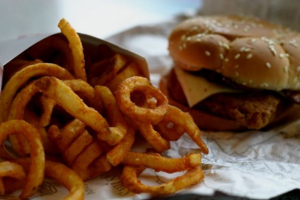
Figure 1: Many people diagnosed with diabetes often rely on blood glucose monitoring technologies such as electronic blood glucose meters to manage their blood sugars, ensuring that insulin and glucagon levels remain at homeostatic levels
Source: Dennis Klicker, Unsplash
Introduction
In the midst of a global pandemic, it may be easy to lose sight of the less volatile, though equally important illnesses that currently impact the health of millions of Americans. Although the vast majority of individuals have heard of the term “diabetes,” few are aware of what the illness actually entails and understand the magnitude of its impact here in the United States. As of 2018, approximately 8.2% of the population has been formally diagnosed with diabetes. This translates to about 26.9 million Americans, a number which is expected to increase by 1.5 million annually (ADA, 2018). Even this staggering statistic fails to incorporate the remaining 2.8% of Americans who, despite meeting laboratory criteria, do not report having diabetes, or are simply unaware of their illness, and consequently remain undiagnosed and untreated (CDC, 2018). Given the prevalence of the illness in the U.S., it’s growing increasingly important to examine the nature of diabetes, its history, and technology that’s currently being developed to alleviate the illness.
Overview of Diabetes
Diabetes is an endocrinological disorder that stems from uncontrolled blood glucose levels, which has the capacity to significantly damage critical systems in the body if left untreated (NIH, 2020). Symptoms of diabetes can include increased thirst, changes in appetite, blurred vision, and general fatigue (JDRF, 2020). Because of the varied origins of the illness, diabetes is divided into two distinct categories: type I and type II. Type I diabetes is sometimes classified as an autoimmune illness because the body attacks its own cells in the pancreas, an organ which is critical for the production of insulin. Insulin is the hormone responsible for regulating glucose levels in the bloodstream. Type II diabetes is often characterized by insufficient levels of insulin, or insulin that does not function properly. While type I diabetes is usually managed solely by insulin injection, type II diabetes can also be managed through exercise, medication supplements, and diet.
In diabetic patients, a lack of effective insulin can result in uncontrolled blood sugar levels (Diabetes UK, 2020). As such, medical professionals often rely on blood tests, such as the fasting plasma glucose (FPG) test and the A1C test for diagnosis of diabetes (NIDDK, 2016). Many of these tests track changes in blood glucose levels to determine whether there’s an issue in glucose regulation. Once diagnosed, most diabetic patients use blood glucose tracking to effectively manage insulin levels and maintain normal blood sugar levels.
Evolution of Blood Glucose Monitoring
Over the past few decades, significant strides have been made in blood sugar tracking technology, which has improved in both accuracy as well as accessibility. Since the mid-1800s, scientists have attempted to quantify blood sugar levels using urine samples. Their efforts were finally met with success in 1908, and a published methodology quickly followed by use of a copper reagent, which oxidized glucose and allowed for tracking of blood sugar levels via color comparison in samples (Clarke et. al, 2012). Although such methods proved effective for tracking blood glucose levels, effective treatment for managing diabetes was not developed until the 1920s, when purified insulin was first proposed as a treatment for diabetes (Diabetes UK, 2017). By 1965, the first test strip had been developed, allowing for more specific, quantitative measurement of blood glucose levels (Hirsch, 2018).
Within the next fifteen years, electric blood glucose monitors were being developed for wide-scale use, significantly increasing accessibility for diabetic patients. These self-monitoring glucose monitors allowed patients to measure glucose levels in their blood at any given time, allowing for the improvement of overall glycemic control (Klimek et. al, 2019). Since this key development in glucose tracking technology, minor improvements continued to be made, including the development of devices that require less blood for each individual blood test. Over the past ten years, continuous glucose monitoring has been introduced to the general populace. This technology enables diabetic patients to monitor their blood sugar levels constantly, which has helped identify blood glucose patterns and allowed the patient to find the realize the best times to inject insulin. The ease with which diabetic patients are now able to track blood glucose levels reflects the large improvements in glucose tracking technology, which have revolutionized the way diabetics live and manage their illness.
Conclusion
While it is clear that we have come a long way in assisting diabetic patients due to recent technological innovation, researchers, engineers, and clinicians are continuing to work towards creating a more effective, accurate, and accessible means of tracking blood glucose levels (Muegge et. al 2016). The importance of these efforts is evidenced by the many ways technological development has directly diminished the risk of a patient becoming hyperglycemic (experiencing high glucose blood levels) or hypoglycemic (experiencing low blood glucose levels). With diabetes on the rise, it’s important for both diabetics as well as non-diabetics to acquire a basic awareness of what diabetes entails and how it impacts the lives of those who have it. The ability to achieve homeostatic blood glucose levels is one fundamental means by which diabetics can begin to live their lives with less uncertainty and with more confidence. While tinkering with medical technologies might seem inconsequential in the moment, the true impact these seemingly minute changes can bear on the lives of millions of people is worthy of every moment of our attention.
References
Clarke, S. F., & Foster, J. R. (2012). A history of blood glucose meters and their role in self-monitoring of diabetes mellitus. British journal of biomedical science, 69(2), 83–93.
Diabetes overview. (2016). Retrieved February 28, 2021, from https://www.niddk.nih.gov/health-information/diabetes/overview
Diabetes tests & diagnosis. (2016). Retrieved February 28, 2021, from https://www.niddk.nih.gov/health-information/diabetes/overview/tests-diagnosis
Diabetes UK. (2017, January 11). First use of insulin in treatment of diabetes on this day in 1922. Retrieved May 10, 2021, from https://www.diabetes.org.uk/about_us/news_landing_page/first-use-of-insulin-in-treatment-of-diabetes-88-years-ago-today#:~:text=On%2011%20January%201922%20insulin,purified%20by%20James%20B%20Collip
Gary JayBourley. (2020). Differences between type 1 and type 2 diabetes. Retrieved February 28, 2021, from https://www.diabetes.org.uk/diabetes-the-basics/differences-between-type-1-and-type-2-diabetes
Hirsch, I. B., Battelino, T., Peters, A. L., Chamberlain, J. J., Aleppo, G., & Bergenstal, R. M. (2018). Role of Continuous Glucose Monitoring in Diabetes Treatment. Arlington, Va., American Diabetes Association.
Klimek-Tulwin, M., Knap, J., Reda, M., & Masternak, M. (2019). History of glucose monitoring: past, present, future. Journal of Education, Health and Sport. 9, 222-227. 10.5281/zenodo.3397600.
Muegge, B. D., & Tobin, G. S. (2016). Improving Diabetes Care with Technology and Information Management. Missouri medicine, 113(5), 367–371.
Prevalence of both diagnosed and undiagnosed diabetes. (2020). Retrieved February 28, 2021, from https://www.cdc.gov/diabetes/data/statistics-report/diagnosed-undiagnosed-diabetes.html
Symptoms & causes of diabetes. (2016). Retrieved February 28, 2021, from https://www.niddk.nih.gov/health-information/diabetes/overview/symptoms-causes
Statistics about diabetes. (2018). Retrieved February 28, 2021, from https://www.diabetes.org/resources/statistics/statistics-about-diabetes#:~:text=Prevalence%3A%20In%202018%2C%2034.2%20million,of%20the%20population%2C%20had%20diabetes.&text=Undiagnosed%3A%20Of%20the%2034.2%20million,and%207.3%20million%20were%20undiagnosed.
Symptoms. (n.d.). Retrieved February 28, 2021, from https://www.jdrf.org/t1d-resources/about/symptoms/
Type 1 diabetes. (2020). Retrieved February 28, 2021, from https://www.mayoclinic.org/diseases-conditions/type-1-diabetes/symptoms-causes/syc-20353011
Related Posts
The Immunological and Physiological Effects of SARS-COV-2 on the Human Body
Figure 1: The representation of cellular activity of SARS-COV-2 as...
Read MoreNew ALS Treatments in Development: Stem Cell Therapy and Neuronal Replacement
For more neuroscience news, check out Akshaya’s organization on neuroscience...
Read MoreMyra Mohammed



